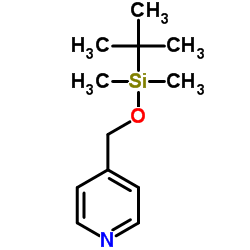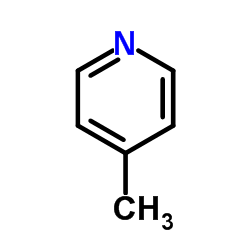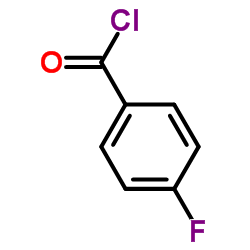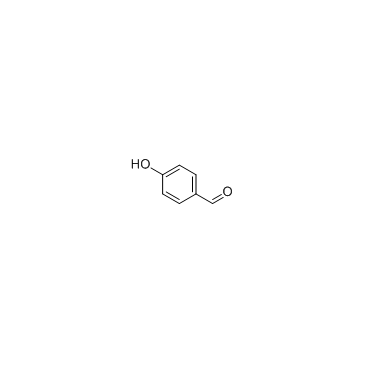152121-30-7
| Name | sb-202190 |
|---|---|
| Synonyms |
4-[4-(4-Fluorophenyl)-5-(4-pyridinyl)-1H-imidazol-2-yl]phenol
4-(4-(4-fluorophenyl)-5-(pyridin-4-yl)-2H-imidazol-2-yl)phenol 4-[4-(4-Fluorophenyl)-5-(pyridin-4-yl)-1H-imidazol-2-yl]phenol 4-[5-(4-Fluorophenyl)-4-(pyridin-4-yl)-1H-imidazol-2-yl]phenol 4-(4-Fluorophenyl)-2-(4-hydroxyphenyl)-5-(4-pyridyl)-1H-imidazole FHPI 4-[4-(4-fluorophenyl)-5-pyridin-4-yl-1,3-dihydroimidazol-2-ylidene]cyclohexa-2,5-dien-1-one 4-(4-fluorophenyl)-2-(4-hydroxyphenyl)-5-(4-pyridyl)imidazole Phenol, 4-[5-(4-fluorophenyl)-4-(4-pyridinyl)-1H-imidazol-2-yl]- SB202190 SB 202190 |
| Description | SB 202190 is a cell-permeable p38 MAP kinase inhibitor with IC50s of 50 nM and 100 nM for p38 and p38β2, respectively. |
|---|---|
| Related Catalog | |
| Target |
IC50: 50 nM (p38), 100 nM (p38β2)[1] |
| In Vitro | Treatment of cells with SB 202190 (SB202190) significantly inhibits both basal and anti-Fas antibody-induced MAPKAPK 2 activity in a dose-dependent manner as measured in immune complex kinase assays with GST-hsp27 as a substrate. Jurkat cells are treated with SB202190 or left untreated. After 24 h, cells are harvested, and the activity of CPP32-like caspases in cell extracts is measured by cleavage of the fluorescent peptide DEVD-AMC, which is a specific substrate of CPP32-like caspases. The cleavage of DEVD-AMC is significantly increased in cells treated with SB202190 but not in the control[2]. |
| In Vivo | In HCT-116-derived colorectal tumors, administration of SB 202190 (SB202190), Sorafenib or a combination of both give similar results in terms of measurement of external tumor size (around 58% growth reduction compare with control tumors). SB202190 induces a 28% reduction of tumor growth, compare with a 31% reduction promoted by Sorafenib, while combination of both drugs reduce tumor growth by 55%[3]. Compare to the model group, the SB202190 group exhibits significantly shorter escape latencies in the Morris water maze hidden platform trials (P<0.01) and longer times in the original platform quadrant during probe trials (P<0.01). The SB202190 group also shows significantly reduced neuronal apoptosis in the hippocampus compared to VaD model rats (P<0.01) as well as higher (antiapoptotic) Bcl-2 expression and lower (proapoptotic) caspase-3 expression (P<0.01 for both). In conclusion, blockade of the p38 MAPK signaling pathway by SB202190 following permanent 2-OV reduced apoptosis of hippocampal neurons and rescued spatial learning and memory deficits[4]. |
| Kinase Assay | MAPKAPK 2 assays are performed. Briefly, Jurkat cells are serum-starved for 24 h and then incubated with or without the specific p38 inhibitor SB 202190 for 30 min prior to treatment with anti-Fas mAb (100 ng/mL) for 2 h or left alone as indicated in the figure legends. The cells are harvested in lysis buffer and clarified by centrifugation. Endogenous MAPKAPK 2 is immunoprecipitated with anti-MAPKAPK 2 polyclonal antibody for 3 h at 4°C. The activity of the immune complex is assayed at 30°C for 30 min in 30 μL of kinase buffer in the presence of 1 μM ATP/10 μCi [γ-32P]ATP (10 Ci/mmol) with GST-hsp27 as a substrate. The reactions are terminated with Laemmli sample buffer. The proteins are resolved by 13% SDS-polyacrylamide gel electrophoresis followed by autoradiography. The phosphorylated proteins are quantitated by a PhosphorImager[2]. |
| Cell Assay | Jurkat/neo or Jurkat/bcl-2 cells (106 cells) are treated with or without SB202190 (50 μM), PD098059 (50 μM) in the presence or absence of caspase inhibitor benzyloxycarbonyl-Val-Ala-Asp (zVAD)-fluoromethylketone for 24 h. The cells are then harvested in lysis buffer (25 mM Hepes, pH 7.4, 0.25% Nonidet P-40, 10 μg/mL leupeptin, 10 μg/mL aprotinin, 5 mM EDTA, 2 mM dithiothreitol, and 10 mM digitonin). The lysates are clarified by centrifugation, and the supernatants are used for caspase assays. The caspase activity is measured in a reaction mixture containing 20 μg of cell extracts, 20 μM fluoregenic peptide acetyl-Asp-Glu-Val-Asp-aminomethylcoumarin (DEVD-AMC). Fluorescent AMC product formation is measured at excitation 360 nm, emission 460 nm using a Cytofluor II fluorescent plate reader[2]. |
| Animal Admin | Mice[3] Female CD-1 athymic nude mice (6-8 week old) are used. 10×106 HT-29 or 10×106 HCT-116 cells are injected subcutaneously into the flanks (0.2 mL per flank) of female athymic nude CD-1 mice. The volume of the tumors is measured every 2-3 d. The tumor volume is calculated using the following formula: volume (mm3)=(width)2×length×0.5. When the tumor volume reaches 60 mm3, mice are randomized into four treatment groups (n≥6 for each group): vehicle (control), Sorafenib 30 mg/kg/d, SB202190 25 μg/kg/d, and Sorafenib 30 mg/kg/d plus SB202190 25 μg/kg/d. Drug treatment is given daily by gavage for Sorafenib and intraperitoneally for SB202190. Mice are treated for 12 d and tumor volume and body weight are recorded every 2-3 d. At the end of the treatment, mice are sacrificed and tumors explanted for histologic and immunohistochemical analysis. Rats[4] Specific pathogen-free (SPF) male Wistar rats (3 month old, 250±10 g) are used. The 60 Wistar rats are randomly assigned to the sham-operated group, the VaD model group, and the SB 202190 group (20 animals each) using a random number table. The VaD rat model (n=40) is established by separating and ligating the bilateral carotid artery via two-vessel occlusion (2-VO). For animals of the sham-operated group (n=20), the bilateral carotid artery is separated using the same methods but without ligation. After recovery, animals of the SB 202190 group receive intracerebroventricular (ICV) injection of SB 202190 and both the VaD model and sham-operated groups received ICV injection of equal volume 0.1% DMSO. In each group, eight rats are examined in the Morris water maze to assess spatial learning and memory, six rats are sacrificed and brain sections are prepared for TUNEL staining and Bcl-2/caspase-3 immunohistochemistry, and six rats are sacrificed and tissue homogenates are prepared for Western blot assay of phospho-p38 MAPK expression. |
| References |
| Density | 1.3±0.1 g/cm3 |
|---|---|
| Boiling Point | 565.7±50.0 °C at 760 mmHg |
| Melting Point | 240-243℃ |
| Molecular Formula | C20H14FN3O |
| Molecular Weight | 331.343 |
| Flash Point | 295.9±30.1 °C |
| Exact Mass | 331.112091 |
| PSA | 61.80000 |
| LogP | 5.00 |
| Vapour Pressure | 0.0±1.6 mmHg at 25°C |
| Index of Refraction | 1.653 |
| Storage condition | 2-8°C |
| Personal Protective Equipment | dust mask type N95 (US);Eyeshields;Gloves |
|---|---|
| Hazard Codes | Xi: Irritant; |
| Risk Phrases | R36/37/38 |
| Safety Phrases | S26-S36/37 |
| RIDADR | NONH for all modes of transport |
| WGK Germany | 3 |
| HS Code | 29333990 |
|
~% 
152121-30-7 |
| Literature: Bioorganic and Medicinal Chemistry, , vol. 5, # 1 p. 49 - 64 |
|
~% 
152121-30-7 |
| Literature: Bioorganic and Medicinal Chemistry Letters, , vol. 11, # 18 p. 2549 - 2553 |
|
~% 
152121-30-7 |
| Literature: Bioorganic and Medicinal Chemistry Letters, , vol. 11, # 18 p. 2549 - 2553 |
|
~% 
152121-30-7 |
| Literature: Bioorganic and Medicinal Chemistry, , vol. 5, # 1 p. 49 - 64 |
|
~% 
152121-30-7 |
| Literature: Bioorganic and Medicinal Chemistry, , vol. 5, # 1 p. 49 - 64 |
|
~% 
152121-30-7 |
| Literature: Bioorganic and Medicinal Chemistry, , vol. 5, # 1 p. 49 - 64 |
|
~% 
152121-30-7 |
| Literature: Bioorganic and Medicinal Chemistry Letters, , vol. 11, # 18 p. 2549 - 2553 |
| Precursor 7 | |
|---|---|
| DownStream 0 | |







